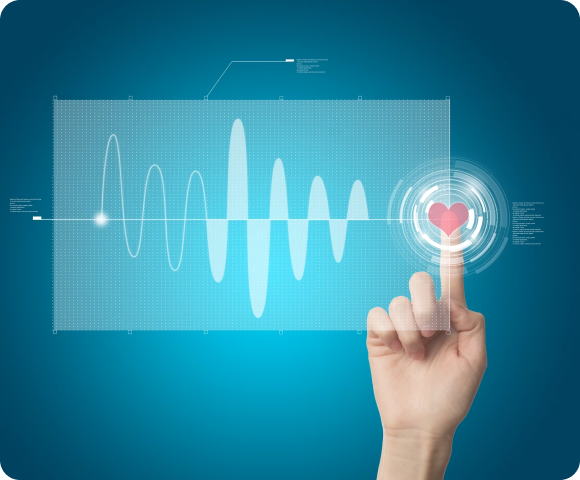Type of Pulsing
The ReGen Pod supports 3 different types of pulsing:
Basic Pulsing
n this case, all 4 wavelengths pulse at the same frequency. This is the most basic form of pulsing.
Harmonic Pulsing
In this case, the system will create multiple simultaneous pulsing frequencies that synchronize together.
Light Fields
These wave combinations use multiple pulsing frequencies with synergistic effects.
Classical Pulsing Frequency Examples
Here are just a few examples of classical pulsing and how we handle multiple or complex pulsing frequencies:
Schumann Universal 7.83Hz (Fixed)
This pulsing frequency is described as the universal pulsing frequency of our universe.
This frequency can be measure anywhere in space and is thought to be a natural harmonic and all the wavelengths are pulsed at the same frequency at the same time.
Theta Wave 5-8 Hz (Sweep)
These pulsing frequency can be measured in the Brain during sleep. Theta Waves are in a range from 5 Hz to 8 Hz so the ReGen Pod rotate the 4 different pulsing frequencies across all the wavelengths for quarter of the time (based on the total time of the step) as seen in this chart below.
Nogier Frequency A 2.28 Hz (Fixed)
Resonated the mesoderm and is associated with metabolism, internal organs, nutritional assimilation and a balanced parasympathetic system. This is a simple pulsing frequency where all the wavelengths are pulsed.
Fi Band - Detox [Fuchtenbusch] (Harmonic Sweep)
This pulsing frequency is based on the research of Anja Fuchtenbush and associates.
This is described as a harmonic light field. In the ReGen Pod, this is a sweeping harmonic field.
Nogier Frequency E Higher Octave 4,672 Hz (Fixed)
This pulsing frequency is fixed across all wavelength and illustrated an example of higher frequency pulsing. The concept is that this pulsing frequency resonates with the spinal cord and peripheral nervous system.
Light Density and The Truth about Pods/Beds
In the world of PBM pods, light density or fluency (measured in mW/cm2 or W/m2) is one of the most important factors in determining outcomes so it has become one of the most debated and manipulated marketing points.
Based on our recent work with the military, we have found that most manufacturers are claiming more than they deliver and that at least one manufacturer is claiming their pod has an measurable fluency of less than 25% of their claimed output.
Buy Your ReGen Pod
Typical Relative Light Measurements
| Light Pod | Tenmars (mW/cm2)Max | TES (mW/cm2)Max | Sanwa (mmW)Max | Sanwa (mmW)Min |
|---|---|---|---|---|
| ReGen Q8 | 70.6 | 69.8 | 23.28 | 19.46(84% of Max) |
| Comp N | 52.4 | 45.31 | 19.53 | 9.05 *1(46% of Max) |
| Comp 360 | 13.2 | 11.9.2 | 11.9.2 | 4.03(95% of Max} |
*The variation between high-density areas and low-density areas is 54%. This is large variation and implies that dosage across the surface area will be inconsistent.
*This data is based on one of the original pods and has was confirm in 2/22 before we pulled out a TL360 from a customer and replaced it with a ReGen Pod. We have video of the testing that we can share if you contact us.
*We have used these systems to test systems at a trade show and found some pods were reading less than 2 mW/cm2. We were blown away that anyone would buy a pod with that power density at any price.
Summary of Results
| Light Pod | Tenmars (mW/cm2)Max | TES (mW/cm2)Max | Sanwa (mmW)Max | Sanwa (mmW)Min |
|---|---|---|---|---|
| ReGen Q8 vs NT | 35% Increase | 54% Increase | 19% Increase | 36% Increase |
| ReGen Q8 vs TL360 | 535% Increase | 586% Increase | 548% Increase | 556% Increase |
Wavelength Control
From the massive body of PBM research, we know that different wavelengths of light to penetrate to different depths and to interact with the tissue in different ways.
810nm
Shows the best balance at being driven deep into the body and then being converted chemical energy. We call this the “primary wavelength” for treating anything deep.
No other wavelength beats 810nm. It is centered within the therapeutic window and shows the highest efficacy in causing the deep tissue photochemical reaction that is PBMT.
850nm
A great supplement to the 810nm diodes. This wavelength provides much of the performance as much more expensive 810nm diode but helps keep the cost of the pod down.
We would never use 850nm as the primary wavelengths for PBM (based on research) but it help us have wavelength diversity and this is a common wavelength in PBM systems.
610nm
Several successful US manufacturers say 600nm to 660nm is the best wavelength. This wavelength is absorbed more by the melanin in the skin and by the blood.
This band is the most accepted wavelength for cosmetic applications (stays closer to the surface) and it does have some interesting properties. Many of the companies that focus on 600 to 660nm shift the emphasis to pulsing the diodes and not dosage.
940nm
Slightly above this wavelength is the 900nm to 980nm range. This range is the dominant choice in US-made high-dosage class-4 systems or High-Intensity Laser Therapy (HILT) devices.
Originally equipment was built in these wavelengths because the diode was cheap because they are used in high volumes in surgical lasers (Early on, you could not even buy a 10 watt 810nm diode).
Interested In a ReGen Pod
Please fill out the form below or call 800-771-2176 so we can answer all your questions including installation requirements, lead times and potential upgrades.
